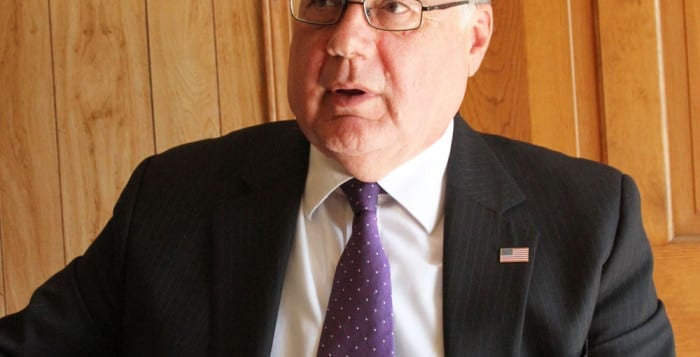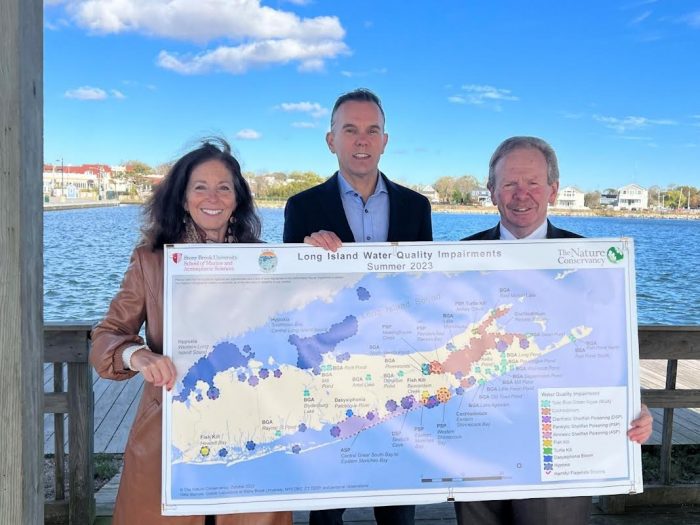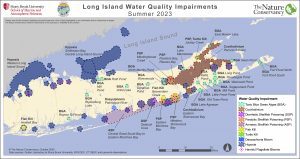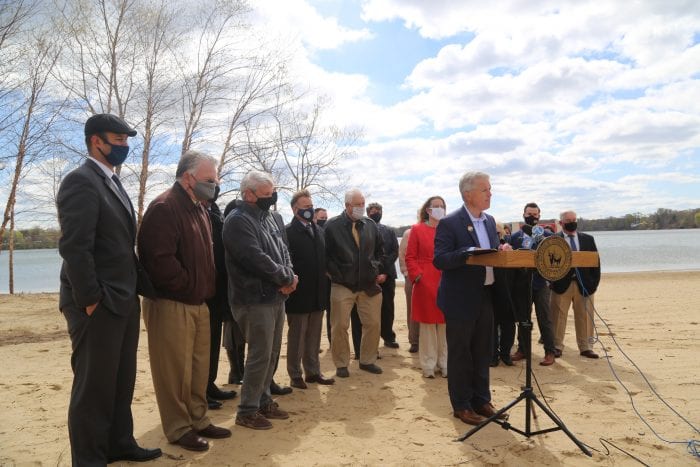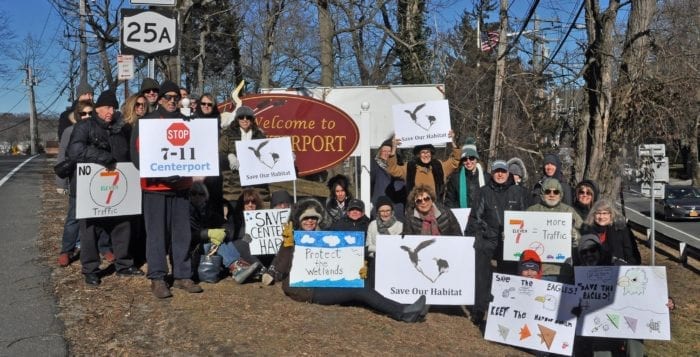By Daniel Dunaief
After four upgrades from bond rating agencies and a comprehensive effort to work together with the legislature, County Executive Ed Romaine (R) believes Suffolk is doing well.
That, however, doesn’t limit opportunities for improvements, particularly in areas such as sewers, water quality, highway and road safety and the opioid war.
In a wide-ranging State of the County address before the 18 members of the county legislature, Romaine began his talk by thanking the group for working well together, setting off a distinction from national and state governing bodies.
“I look at other levels of government” including Washington and Albany and “the partnership is missing there, replaced by partisanship,” Romaine said. Local governments at the level of villages, town and counties, have to “deal with the pragmatic and we have to make sure that things work.”
Indeed, since he took office 15 months ago, Romaine said he hasn’t vetoed a single resolution.
Recognizing the bigger picture challenges of an economy that could suffer amid tariff tumult, Romaine suggested that seasoned political veterans had been through tough times before, such as the pandemic in 2020, the financial market meltdown in 2008 caused by the subprime mortgage market meltdown and the stock market rout of 1987.
“We got through tough times before and we’ll get through this as a team,” Romaine said.
Romaine highlighted how the county had received four bond upgrades. In December, Moody’s Ratings upgraded the county’s debt rating to A1 from A3 due to the county’s improved financial position, sales tax growth and operational oversight, according to the Bond Buyer.
Bond rating upgrades lower the cost of the county selling debt through the public markets, as investors typically don’t require as much interest for borrowing entities that are more likely to pay back their debts. This benefits the county and taxpayers, who don’t have to pay additional interest.
Romaine reiterated that he would never pierce the tax cap, which is the state limit on how much an entity can charge in property taxes.
Additionally, Romaine plans to settle some of the outstanding lawsuits that the county has been facing since before Romaine took office.
Claw back money
On the fiscal side, Romaine suggested the previous administration, run by Steve Bellone (D), had spent about $27 million on cybersecurity.
Romaine said he’s looking to claw back money from spending that “should not have taken place,” he said.
Romaine has hired a chief information officer, who is working with Homeland Security and cybersecurity and infrastructure security agencies.
“We have someone on staff and virtual,” Romaine said, in an effort to continue to safeguard infrastructure.
As for the Department of Public Works, he is aiming to improve roads, drainage and sewage, as he suggested infrastructure was “neglected for far too long.”
Sewers are a significant challenge for the county, with 70 percent of the county having cesspools and septic tanks.
In the next three and a half years, Romaine plans to spend over $1 billion in the county on sewers.
Speaking to a representative from the office of Gov. Kathy Hochul (D), Romaine challenged the governor to invest in the county, which he would match dollar for dollar on sewers and clean water.
Well water, which can be contaminated, is also a problem for the county.
“Imagine having to drink that water, or bathe your child in that water, or put formula in that water?” Romaine asked.
Residents need a funding source to change their source of water. Romaine plans to work with federal and state governments.
Water quality “should not be based on income,” Romaine said.
Energy
In addressing the likely energy problems created by future storms that threaten to cut off the energy supply when trees topple on power lines, Romaine indicated he’s talking with the Long Island Power Authority and PSE&G about burying their lines over many years to increase resilience.
While Romaine would like to come up with incentive programs to encourage industrial buildings, schools and other public buildings that can structurally afford it to put solar panels on their rooftops, the substations for these energy companies are “inadequate.”
“LIPA, spend the money, invest in substations,” he said. “That’s my very clear message.”
Pointing to another resource, Romaine suggested linking the extensive farm system on Long Island with schools to work to ensure that no one, particularly children, should go hungry.
Schools “can purchase farm products for school lunches,” which are more nutritious and support farmers, he said. “The synergy has to be worked out.”
To celebrate and promote aquatic farmers, Romaine said Smith Point would be the site of the first all Suffolk oyster festival in the third week in August.
Echoing a focus of Suffolk County Police Commissioner Kevin Catalina, Romaine focused on road safety.
“When you get on the highway, you don’t have to take your life in your hands,” said Romaine.
The County Executive launched a permanent task force to combat street racing and takeovers. The Suffolk County Police Department recently added nine patrol officers to enhance highway safety and will add more officers in the summer.
In addressing safety from one of the scourges of the island, Romaine asked the legislature to work with him to reform the opioid fund distribution review process.
He would like to get the third round of funding out by this summer. The first two rounds included worthy applicants, such as the Police Department, the Medical Examiner who buried 400 people from overdoses, the probation department, the sheriff’s department and the health and social service department which all received no funding.
These agencies need to know what they have to do to get the necessary funding to make a difference in the lives of people battling addictions to opioids.



